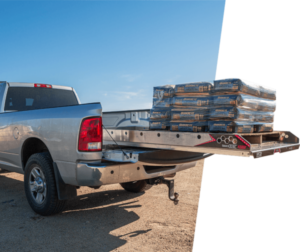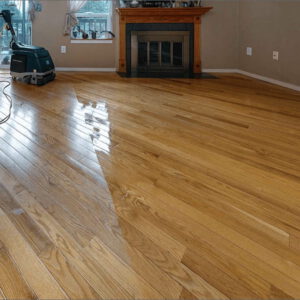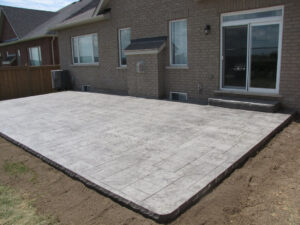Truck Accessories can breathe new life into your vehicle, increasing its utility and functionality. Some, like first aid kits and tire pressure gauges, are smart safety additions.

Other, like tool boxes and ladder racks, help you carry and store cargo more efficiently. Exterior truck accessories like bug deflectors, running boards, and Nerf bars add style to your ride.
A ladder rack is an ideal solution if you need to haul ladders or other long items in your truck. These truck accessories are available in different styles to suit various applications, and they can be mounted on the roof, side, or bed of your vehicle. Some of them feature a hydraulic EZ load system to help you transport ladders without straining your back or risking injury. They also help you to save on space and make loading and unloading ladders easier by eliminating the need for a trailer.
These truck accessories are suitable for most pickup trucks, but you should choose the model that suits your specific needs. For example, if you plan to use the ladder rack for other purposes, such as carrying kayaks or lumber, look for one with adjustable crossbars that can accommodate different loads. You can also consider a rack that has a rear roller to reduce stress on your ladders while transporting them.
Some truck racks have locking mechanisms to prevent theft when your vehicle is unattended. They are also designed to fit your specific truck or van and offer a secure, stable support for your loads. In addition, they are made of high-quality materials to ensure durability and safety.
Ladder racks are an excellent way to get the most out of your truck and make work more efficient. They eliminate the need to transport ladders in the bed of your truck, which can be dangerous if you’re driving on rough roads or taking sudden turns. They also allow you to free up more space in the back of your truck or van for cargo and tools.
While installing a ladder rack on your truck, make sure that you follow the manufacturer’s guidelines to avoid voiding the warranty. Also, check the condition of your truck body for any dents or damage that could cause problems when using the ladder rack. This will help you to avoid the headaches of a costly repair or replacement later on. If you’re concerned about your warranty, ask a professional to install the rack for you.
Tire Table
When it comes to truck accessories, many of them are designed for the purpose of making your vehicle more functional and comfortable. There are also truck accessories that are designed to enhance your vehicle’s appearance. These can include things like custom-made mud flaps and LED light kits. These accessories can be a great way to add some personality and flair to your vehicle.
Another truck accessory that can be used to make your outdoor activities more comfortable is a Tire Table. This durable steel table uses your vehicle’s tire as its main support, which allows it to be stable regardless of the ground conditions. It also has an expanded metal surface, which makes it easy to clean up spills and dirt. It’s a great option for tailgating, camping, or picnicking, as it can be easily set up and taken down in seconds.
The table can be adjusted to different heights, depending on your needs. It can be used straight up and down, or angled towards the rim of the tire to keep it out of the way of kicking or allow more leg room underneath. It can also be lowered and extended from the center of the wheel, or pushed down and locked against the rear of the tire to create a flat platform.
The tire table is a great addition to any truck, but it’s especially useful for those who enjoy tailgating or camping. It can be used to hold food, drinks, and other supplies, and it can be quickly setup and taken down in seconds. It can even be used as a portable workstation when you need to fix something on the side of the road. This handy tool is sure to come in handy on your next outdoor adventure. For more information about these and other truck accessories, visit us at The Truck Shop. We have everything you need to customize and upgrade your ride. Whether you’re looking for more storage space, a spray-on bedliner, or some new tires, we have it all. Stop in and browse our selection today!
Trunk Organizer
Whether you’re hauling tools to and from a jobsite, storing supplies for a road trip, or stashing food and snacks for the kids, a trunk organizer can help you keep your truck clean and organized. Often simple and affordable, they can be customized to fit specific needs with features like adjustable dividers, built-in coolers, and pockets.
The best trunk organizers are made of durable materials that can hold heavy items without losing their shape. They’re also designed to be easy to install and to fold down when not in use. Some even come with a convenient carrying handle, making them easier to take in and out of your vehicle. Many feature mounting hardware compatible with most vehicles, while others can be secured to the floor of your truck with bungee cords or tie-down straps.
Look for a trunk organizer that fits the dimensions of your truck or car to ensure it’s secure and doesn’t take up extra space. Some even have non-slip bases to prevent it from sliding during sudden turns or stops. Other popular features include adjustable dividers, insulated coolers, and adjustable straps.
Many of the best trunk organizers are able to be folded down flat when not in use, which saves space and allows you to store them easily in your garage or in your trunk. They’re usually constructed of durable materials that are easy to clean, and they may have removable dividers and a flip-top cover to help protect belongings from weather and other elements.
Another great trunk organizer option is the Oasser Cargo Trunk Organizer, which can be customized to your specific storage needs with two adjustable, sliding dividers. This helps keep fragile items and groceries safe and upright, eliminating worries about bruised fruit or squished bread. It’s also water-resistant, ensuring any liquids don’t spill.
If you prefer a simpler trunk organizer, consider the Calpak Trunk Organizer Bin. This model is a bit more expensive than most, but it has a classy, no-frills design that’s perfect for an upscale ride. It’s crafted from durable and easy-to-clean materials and has stickers at the bottom to keep it in place. It’s a little more spacious than our Best Budget pick but doesn’t feature the added convenience of handles for easier transport.
Performance Enhancers
Trucks are more than just vehicles — they’re the tools we use for work, play and adventure. These versatile haulers can be outfitted with the right accessories to enhance their utility and performance. For example, a tool box helps keep tools organized and safe in your pickup while saving space. Ladder racks make it easier to transport ladders and other long objects, while cargo mats help preserve the truck bed and prevent items from rolling around the back of your truck. For hunters, there are tie-down cargo straps and deer hoists to manage game, while off-roaders can install emergency road kits and air compressors to stay prepared for any situation.
Truck accessories are also available to improve your vehicle’s appearance. Running boards and side steps make it easier to get in and out of the vehicle, while mud flaps help shield the wheels from rocks, dirt and debris kicked up by your tires. For a sleek look, try chrome trim pieces and tinted windows to add a custom touch to your ride. If you prefer a stealthy look, there are black truck parts and accessories to give your truck a dark theme.
Some aftermarket truck accessories can also increase resale value. Tonneau covers and bed liners protect the truck’s interior and cargo area from damage, while lift kits are appealing to off-roaders and can boost the vehicle’s handling, ride quality and towing capabilities. However, if poorly installed or low-quality accessories are added, they may detract from the resale value of the truck.
Ready to upgrade your pickup? Check out the extensive selection of truck accessories at JEGS to find the perfect match for your truck. We offer everything from essential utility upgrades like spray-in bedliners and floor mats to automotive lighting, spare tire carriers and more. Whether you’re shopping for utilitarian features or to enhance your vehicle’s style and performance, we have the parts and accessories you need at the prices you want.

